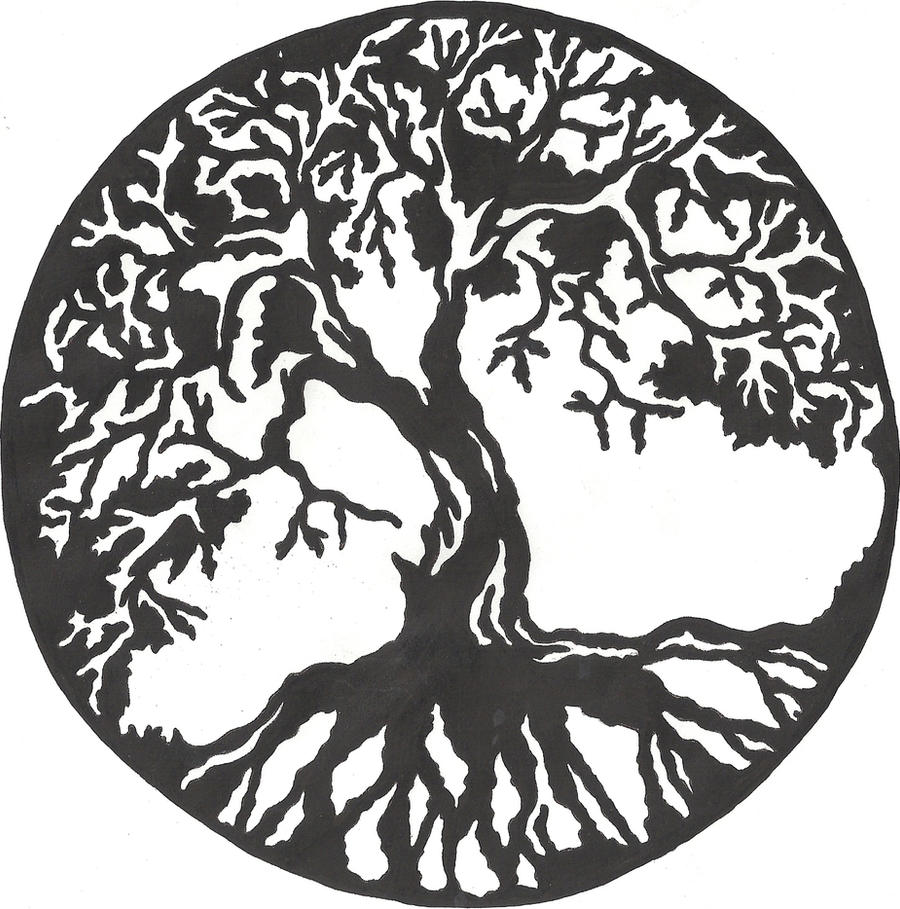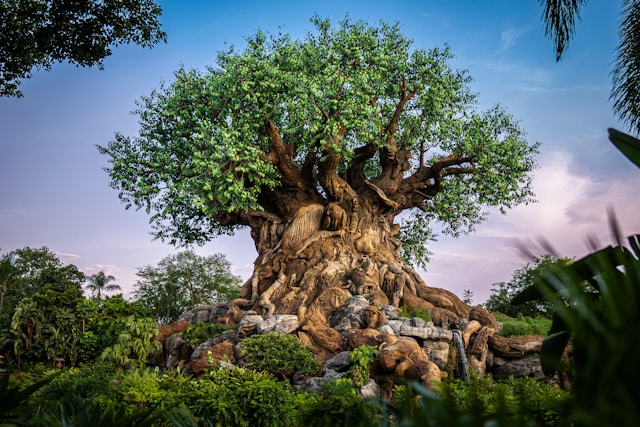What Is the Tree of Life Symbol? Meaning, Origins, and Spiritual Significance
The Tree of Life is one of the most enduring and recognizable symbols across cultures and religions. If you’ve ever wondered what is the Tree of Life symbol, its meaning goes far beyond its simple, elegant design.
Often depicted as a tree with sprawling branches and deep roots, it represents the connection between all forms of creation — from the physical world to the spiritual realm.
This timeless image has appeared in ancient civilizations, mythology, sacred geometry, and modern jewelry design. For some, it symbolizes family roots and personal growth; for others, it represents immortality, rebirth, and the interconnectedness of all life.
Whether you’ve seen it carved into ancient temples or engraved on a pendant, understanding its deeper significance can transform the way you see this universal emblem.
In this article, we’ll explore the history, cultural interpretations, spiritual meanings, and modern uses of the Tree of Life, so you can fully appreciate the beauty and wisdom it carries.
Origins of the Tree of Life Symbol
The Tree of Life is not tied to just one culture; it appears in countless traditions around the world. Ancient Mesopotamia depicted it in carvings as the “Sacred Tree,” symbolizing divine knowledge. In Egyptian mythology, it represented abundance and eternal life, often associated with the god Osiris. In Norse mythology, the Yggdrasil — a massive ash tree — connected the nine realms of existence.
Across these cultures, the imagery is consistent: a strong trunk, deep roots, and an expansive canopy. This structure reflects the universal human understanding that life is interconnected — what happens in one realm affects all others. This is why in sacred geometry, the Tree of Life pattern is often drawn within a circle, representing unity and completeness.
By studying what is the Tree of Life symbol through history, we see that it is both a cultural artifact and a spiritual archetype, showing humanity’s shared desire to understand the mysteries of existence.

Spiritual Meaning of the Tree of Life
In spiritual symbolism, the Tree of Life represents balance, growth, and the link between the material and spiritual worlds. Its roots reach deep into the earth, while its branches stretch toward the heavens — a reminder that we are grounded in reality but connected to higher wisdom.
Many see it as a symbol of personal development. Just as a tree starts from a seed and grows over time, our spiritual journey is one of constant learning, overcoming challenges, and branching out into new experiences. The leaves can represent our achievements, while the roots signify our heritage and inner strength.
The Tree of Life also holds meaning in metaphysical beliefs. Some interpret it as a map of creation, showing how energy flows from the divine source into the physical world. In this sense, what is the Tree of Life symbol becomes a question not just of art, but of universal law and cosmic connection.
+ Related:
- 4 Types of Dreams That May Hold Hidden Messages
- What Does the Celtic Knot Symbolize? Discover The Sacred Origins
The Tree of Life in Different Cultures
- Celtic Tradition – Known as “Crann Bethadh,” the Celtic Tree of Life symbolized harmony and balance in nature. Druids believed trees were sacred ancestors and protectors of life.
- Christianity – Appears in the Bible’s Book of Genesis as the tree in the Garden of Eden, representing eternal life.
- Judaism – The Kabbalistic Tree of Life maps the ten Sephirot, or attributes, through which God manifests in the world.
- Islamic Culture – Symbolizes eternal life and divine creation.
- Buddhism & Hinduism – Associated with the Bodhi tree, under which Buddha attained enlightenment, representing spiritual awakening.
Each tradition adds its own layer to the meaning of the symbol, yet all agree on its representation of life, growth, and connection.
Modern Uses of the Tree of Life Symbol
Today, the Tree of Life appears in fashion, home décor, tattoos, and especially jewelry. Wearing it as a pendant or ring is often seen as a way to carry protection, wisdom, and strength close to the heart. In the wellness and spiritual community, it’s used in meditation spaces to inspire harmony and grounding energy.
Artists and designers often adapt the symbol in creative ways — stylizing its branches, adding sacred geometry elements, or incorporating gemstones that enhance its meaning. This has helped the Tree of Life remain relevant and appealing even in modern contexts.
For those exploring what is the Tree of Life symbol in the present day, it’s both a personal emblem and a reminder of our place in the greater web of life.
Tree of Life as Sacred Geometry
In sacred geometry, the Tree of Life is seen as a blueprint of creation. It maps the process through which divine energy flows into physical reality. This interpretation connects deeply with Kabbalah, where the ten Sephirot are arranged in a geometric pattern, each representing an aspect of God and creation.
This version of the Tree of Life is often studied in spiritual disciplines as a meditative tool, helping practitioners understand the nature of the universe and their role within it. The combination of art, mathematics, and spirituality gives the symbol a multi-dimensional depth that has fascinated mystics for centuries.
Symbolism of the Tree’s Elements
- Roots – Foundation, grounding, ancestry, stability.
- Trunk – Strength, personal growth, life’s challenges.
- Branches – Expansion, relationships, new experiences.
- Leaves – Knowledge, achievements, abundance.
- Fruit – Rewards, enlightenment, legacy.
By breaking the symbol into its components, we gain a richer understanding of what is the Tree of Life symbol and why it resonates so deeply across cultures.
Is the Tree of Life an Irish Symbol?
Yes. In Celtic tradition, the Tree of Life — known as Crann Bethadh in Irish — is a powerful emblem of harmony, strength, and the interconnection of all living things. The Celts believed trees were sacred beings that provided food, shelter, and spiritual wisdom. Each village often had a central tree considered a gateway between the earthly and spiritual realms.
The Celtic Tree of Life symbol features branches and roots interwoven in a circle, representing the cycle of birth, death, and rebirth. This design also embodies balance in nature, as the roots mirror the branches above. For those exploring what is the Tree of Life symbol, the Irish interpretation offers a strong connection to ancestry and the natural world.
Is the Tree of Life a Pagan Symbol?
The Tree of Life is deeply rooted in many pagan traditions, particularly in pre-Christian Europe. Pagans viewed it as a representation of nature’s eternal cycle and the divine feminine energy of creation. It was seen as a sacred axis — a link between the underworld, the earthly plane, and the heavens.
In modern paganism and Wicca, the Tree of Life still holds spiritual significance. It symbolizes growth, transformation, and the interconnected web of existence. Whether in ancient rituals or contemporary spiritual practice, its symbolism aligns perfectly with the core beliefs of earth-centered faiths.
What Does the Bible Say About the Tree of Life?
The Tree of Life appears in the Bible, first in the Book of Genesis as a tree planted by God in the Garden of Eden. It represents eternal life and divine sustenance. After Adam and Eve ate from the Tree of Knowledge, they were barred from accessing the Tree of Life to prevent them from living forever in a fallen state.
In the Book of Revelation, the Tree of Life returns as a promise of restoration. It is described as bearing twelve kinds of fruit, offering healing to the nations. For Christians exploring what is the Tree of Life symbol, its biblical meaning reflects God’s provision, eternal life, and ultimate redemption.
Is the Tree of Life a Viking Symbol?
Yes, in Norse mythology, the Tree of Life is closely associated with Yggdrasil — a giant ash tree that connects the nine realms of existence. Yggdrasil was considered the cosmic axis, linking the world of gods (Asgard), humans (Midgard), and other realms.
This sacred tree was central to Viking cosmology and symbolized the cycle of life, death, and rebirth. It was also a source of wisdom and prophecy. For those looking into what is the Tree of Life symbol from a Norse perspective, Yggdrasil embodies strength, endurance, and the unity of all worlds.
Where Is the Tree of Life Today?
If you’re asking about the physical Tree of Life, the term can refer to different locations around the world. One famous example is the massive baobab tree in Africa known locally as the Tree of Life due to its ability to store water and sustain life. Another iconic representation is the Tree of Life sculpture at Disney’s Animal Kingdom in Florida.

As a symbol, the Tree of Life exists globally — in jewelry, home décor, religious artwork, and sacred spaces. No matter where it appears, it continues to carry the universal message of interconnectedness and renewal.
Where Should You Hang the Tree of Life?
In Feng Shui and spiritual home décor, hanging the Tree of Life in your living space is believed to invite positive energy, growth, and balance. It is often placed in the living room, office, or meditation area to encourage harmony and inspiration.
For symbolic purposes, many people hang it near an entrance to welcome good fortune or in a family room to represent unity and strong roots. Whether you choose a wall art piece, tapestry, or wooden carving, positioning the Tree of Life thoughtfully can enhance both the aesthetic and spiritual atmosphere of your home.
Final Thoughts on the Tree of Life Symbol
The Tree of Life is more than an artistic motif — it’s a universal language of connection, growth, and unity. It reminds us that all life is interwoven, and that our actions, like branches, reach far beyond what we can see.
Whether you approach it from a historical, spiritual, or personal perspective, exploring what is the Tree of Life symbol opens a doorway to understanding yourself and the world around you. Its timeless appeal lies in its ability to bridge cultures, beliefs, and generations — a living testament to the idea that we are all connected.





